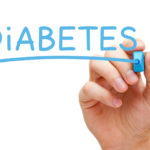When it comes to lifestyle diseases, most of their symptoms go unnoticed. As statistics from the center for disease control (CDC) in the US have it, an adult population of about 10 percent has diabetes. In addition, a seventh of the population is not yet diagnosed. With such a rate of infection, public awareness needs to be the main focus of medical institutes and the government as well. Type 2 diabetes is a condition where the body is not able to use up the blood sugar and the levels gradually go up, which ends up damaging major organs. Below are some early signs to keep an eye on.
Polyphagia
This is when you are always looking to filling your belly frequently. Though you always seem to overfeed, you don’t seem to gain weight, which could be an early indicator of diabetes. The intense hunger results from the broken circulation of glucose into the cells forcing you to feed more than you should.
Extreme thirst and frequent urination
This is one of the most common signs of type 2 diabetes. Though most people are aware, most of them are unable to differentiate it. This could be due to regional factors or climatic factors. The thirst is an autonomous mechanism for the body to get rid and dissolve the excess blood sugar in the blood. This thirst does not always result in a satisfactory quench. Polyuria comes to complement the process by allowing glucose through the kidneys. With a high amount of water and glucose, the constant urge to urinate is inevitable.
Slow-healing wounds
The high blood sugar often causes damage to your major organs and immune system in general, thus the entire system has hard time-fighting infections. Diabetes causes blood vessels to narrow down results to slow blood circulation and increased infiltration to increase to the rate at which the body gets rid of the excess blood sugar, this limits the flow nutrients and oxygen needed for healing in the infected or damaged organs.
Diabetic Neuropathy
This is a condition where you experience numbness, tingling, and pain in your hands and feet. This condition gradually develops as a result of nerve damage. The nervous system plays a crucial role in most of the autonomic functions of the body. It is, therefore, lethal if the condition is not dealt with on time. Though it is mentioned that the condition develops slowly, this might occur as the first sign to some diabetics.
Fatigue
Diabetics often feel fatigued due to insufficient circulation of sugar. Just like any other machine out there, human beings also require energy to properly function. In this case, we take in food that is broken down to glucose meant to fuel the cells. When the cells are not well circulated with sugar and oxygen, this results in fatigue.
Equipped with this information, one is able to get early treatment and make significant lifestyle changes. Once a person is aware of their diabetes condition, it becomes easier for them to take control of their blood sugar levels and improving their overall health.








